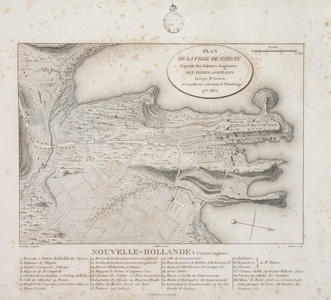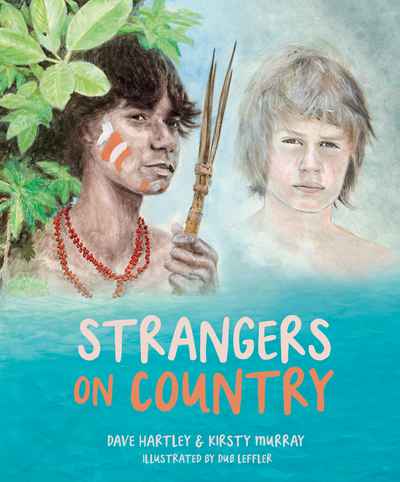


Source: William Bradley (1789)
The arrival of European colonisers in 1788 forever changed the ways in which Indigenous people lived. Europeans forced Indigenous people off of Country, removing them from their homes and sacred places and often killing Indigenous people in the process. They introduced foreign species of plants and animals which destroyed ecosystems that had been carefully managed by Indigenous peoples, destroying important sources of food for Indigenous people. They introduced foreign diseases which resulted in the deaths of numerous Indigenous people. And they tried to impose their way of life on Indigenous people, interrupting a chain of culture and knowledge that stretched for thousands of years through the forced removal of Indigenous children, the massacre of whole clans of Indigenous people, and by punishing Indigenous people for using their own language and practising their own culture. But through all these changes, Indigenous people resisted and fought back. Read through the resources below to learn more about contact and conflict between European colonists and Indigenous Australians, and how Indigenous Australians resisted colonisation.


During his first voyage of discovery, James Cook's landing at Botany Bay on 29 April 1770 was opposed by two Aboriginal warriors from the Gweagal clan. Cook and his landing party attempted to communicate their desire for water and offered the Aboriginal warriors gifts of nails and beads. The two warriors launched stones and spears at the landing party which responded with small shot from their muskets. One of the warriors was wounded and they both retreated, leaving behind spears and a shield. Joseph Banks collected these items and took them back to England. It is believed that this shield from the British Museum is that shield: evidence of one of the first conflicts between Indigenous Australians and European colonsiers.

Governor Phillip (in the 'Governors' Vocabulary', 1791) included the Gomerigal.Tongara among the 'other Tribes that live near us' and listed the placename 'Long Cove - Go-mo-ra'. This suggests the clan was located at Long Cove, later Cockle Bay or Darling Harbour.
Logically, they would also have occupied Blackwattle Bay (now Glebe), seen on the French plan (38) before land reclamation, as a large body of shallow water, and Blackwattle Creek, near the village of the Brickfields (Chippendale).

This engraving comes from the published version of the papers of Sydney Parkinson, the natural history artist.
The engraving is the best-known image of the confrontation at Botany Bay. It may be based on a lost original drawing by Parkinson, although the engraver may well have added elements of his own interpretation.
View along Collins Street looking west towards Market Street, from approximately Russell Street. Several sailing ships can be seen in the Pool to the left of Collins Street and a group of Aboriginal people are surveying the scene from the high ground in the foreground of the image. A vegetable garden surrounded by a picket fence can be seen lower right.

This document demonstrates what early European colonists thought of Indigenous Australians.


 Nanberry
by
Nanberry
by
 Strangers on country
by
Strangers on country
by
 The mind of a thief
by
The mind of a thief
by
 Heroes, rebels and innovators : inspiring Aboriginal and Torres Strait Islander people from history
by
Heroes, rebels and innovators : inspiring Aboriginal and Torres Strait Islander people from history
by